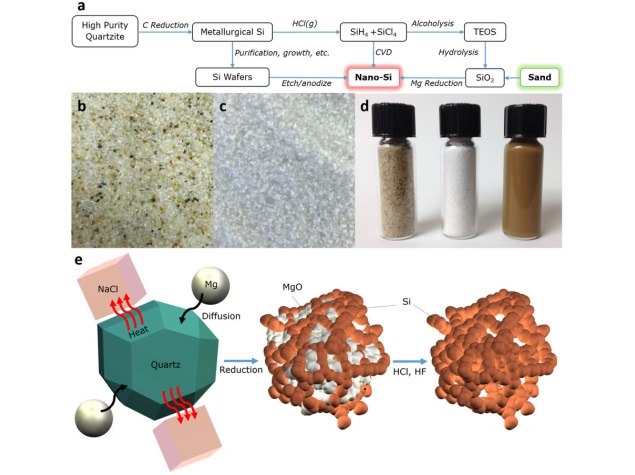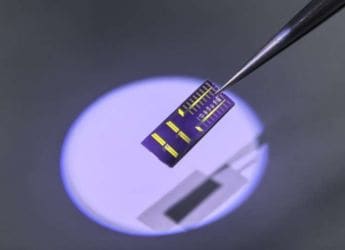- Home
- Science
- Science News
- Scientists Develop Method to Make Cheap Nano Silicon Batteries With Sand
Scientists Develop Method to Make Cheap Nano-Silicon Batteries With Sand

"This is the holy grail a low cost, non-toxic, environmentally friendly way to produce high performance lithium ion battery anodes," said Zachary Favors from University of California, Riverside in the US.
Currently graphite is used in battery anodes, and further improvements on graphite are not viable.
To make better batteries, researchers are focussed on nano silicon, the size of a billionth of a metre, as a replacement for graphite. Nanoscale silicon, however, degrades quickly and is difficult to produce in a large quantity.
To get large quantities, Zachary used the most common source of silica, beach sand from a beach at Cedar Creek.
This pure silicate sand was purified, powdered and then ground with salt and magnesium. This mixture was heated to remove oxygen from the quartz, resulting in pure silicon.
The team was fortunate that the pure nano-silicon formed had a porous three-dimensional silicon sponge like consistency.
That porosity has proved to be the key to improving the performance of the batteries built with the nano-silicon.
The improved performance could mean expanding the expected lifespan of silicon-based batteries up to three times or more.
This better battery could power electric vehicles, cell phones or tablets.
The findings appeared in the journal Nature Scientific Reports.
Get your daily dose of tech news, reviews, and insights, in under 80 characters on Gadgets 360 Turbo. Connect with fellow tech lovers on our Forum. Follow us on X, Facebook, WhatsApp, Threads and Google News for instant updates. Catch all the action on our YouTube channel.
Related Stories
- Samsung Galaxy Unpacked 2025
- ChatGPT
- Redmi Note 14 Pro+
- iPhone 16
- Apple Vision Pro
- Oneplus 12
- OnePlus Nord CE 3 Lite 5G
- iPhone 13
- Xiaomi 14 Pro
- Oppo Find N3
- Tecno Spark Go (2023)
- Realme V30
- Best Phones Under 25000
- Samsung Galaxy S24 Series
- Cryptocurrency
- iQoo 12
- Samsung Galaxy S24 Ultra
- Giottus
- Samsung Galaxy Z Flip 5
- Apple 'Scary Fast'
- Housefull 5
- GoPro Hero 12 Black Review
- Invincible Season 2
- JioGlass
- HD Ready TV
- Laptop Under 50000
- Smartwatch Under 10000
- Latest Mobile Phones
- Compare Phones
- OnePlus 15R
- Realme Narzo 90x 5G
- Realme Narzo 90 5G
- Vivo S50 Pro Mini
- Vivo S50
- OPPO Reno 15c
- Redmi Note 15 5G
- Redmi Note 15 Pro 5G
- Asus ProArt P16
- MacBook Pro 14-inch (M5, 2025)
- Infinix Xpad Edge
- OnePlus Pad Go 2
- OnePlus Watch Lite
- Just Corseca Skywatch Pro
- Acerpure Nitro Z Series 100-inch QLED TV
- Samsung 43 Inch LED Ultra HD (4K) Smart TV (UA43UE81AFULXL)
- Asus ROG Ally
- Nintendo Switch Lite
- Haier 1.6 Ton 5 Star Inverter Split AC (HSU19G-MZAID5BN-INV)
- Haier 1.6 Ton 5 Star Inverter Split AC (HSU19G-MZAIM5BN-INV)

















